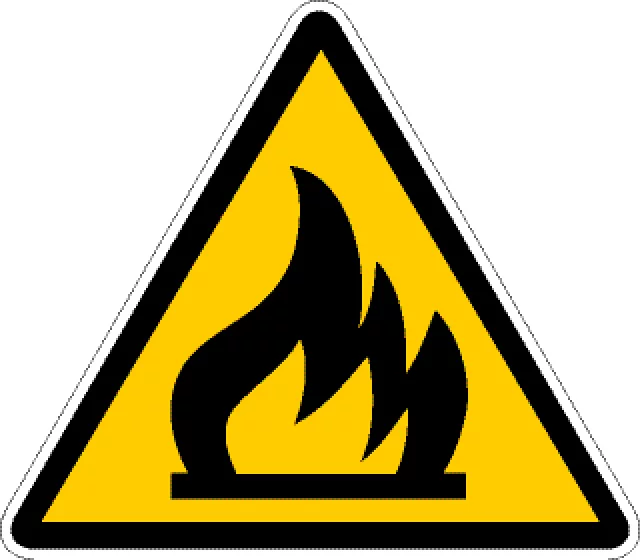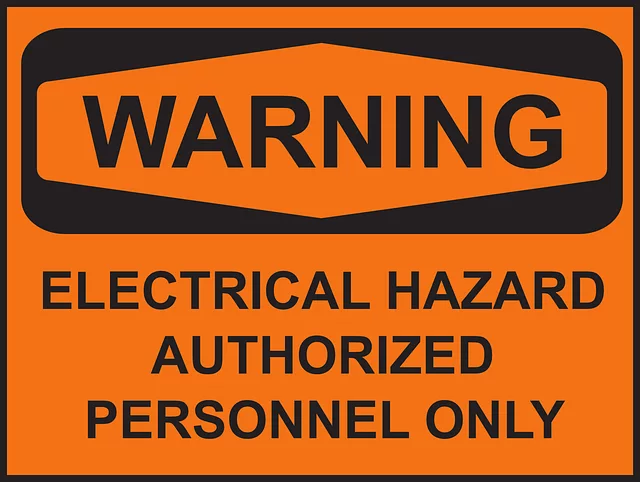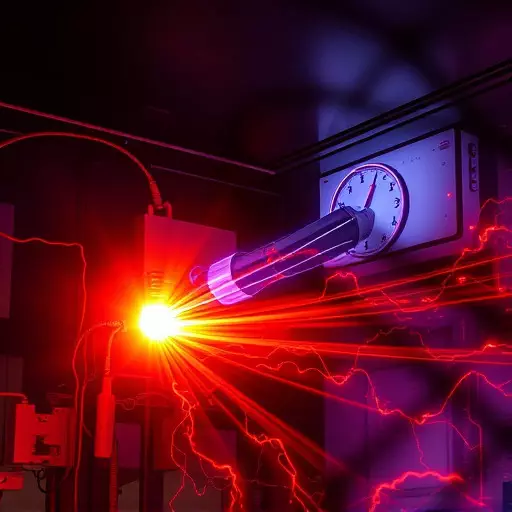The NFPA 70E standard provides a comprehensive guide for electrical safety in the workplace, prioritizing risk minimization from arc flash hazards. Arc Flash Hazard Analysis (AFHA) is a structured approach that identifies and mitigates risks through assessments of electrical systems, components, and work practices. By implementing AFHA strategies, such as using PPE, engineering controls, and upgrading electrical systems, organizations ensure electrical safety compliance, protect employees, and maintain operational continuity. Regular reviews and adherence to NFPA 70E guidelines foster a culture of safety awareness and continuous risk reduction.
“In the pursuit of a safe and productive work environment, understanding NFPA 70E—the Standard for Electrical Safety—is paramount. This comprehensive guide delves into the essential aspects of managing electrical risks, focusing on arc flash hazards. We explore methods to conduct thorough Arc Flash Hazard Analysis, assess risks, and implement effective reduction strategies. Additionally, we discuss the significance of Electrical Safety Compliance and offer best practices for continuous improvement in electrical safety measures.”
- Understanding NFPA 70E: The Standard for Electrical Safety
- Arc Flash Hazard Analysis: Identifying and Assessing Risks
- Implementing Risk Reduction Strategies for Arc Flash Prevention
- Electrical Safety Compliance: Ensuring Safe Work Practices
- Best Practices for Continuous Improvement in Electrical Safety
Understanding NFPA 70E: The Standard for Electrical Safety
NFPA 70E is a comprehensive standard designed to ensure electrical safety in the workplace. This industry-recognized code provides guidelines for electric systems and equipment, focusing on minimizing risks associated with arc flash hazards. By adhering to NFPA 70E requirements, organizations can achieve essential electrical safety compliance, protecting both employees and property from potential dangers.
The standard offers a structured approach to managing electrical risks, emphasizing the importance of a thorough arc flash hazard analysis. This process involves identifying and evaluating potential sources of arc flash, enabling implementers to put in place effective strategies for risk reduction. Through this systematic methodology, NFPA 70E ensures that workplaces are equipped with the necessary precautions, enhancing overall safety and compliance.
Arc Flash Hazard Analysis: Identifying and Assessing Risks
Arc Flash Hazard Analysis is a critical component of ensuring electrical safety compliance as per NFPA 70E standards. It involves a systematic process of identifying and assessing risks associated with potential arc flash events. This analysis helps organizations to understand and mitigate the hazards posed by electrical equipment, particularly in high-risk industries where electric arcs can lead to severe injuries or fatalities. By conducting a thorough Arc Flash Hazard Analysis, companies can implement effective strategies for arc flash risk reduction.
The process begins with evaluating the electrical system and identifying potential sources of arcing faults. This includes examining equipment, wiring, and components for vulnerabilities. Once these risks are identified, organizations can employ various methods to mitigate them, such as upgrading equipment, implementing engineering controls, or providing personal protective equipment (PPE). Regular reviews and updates to this analysis are essential to adapt to changing operational conditions and ensure ongoing electrical safety compliance.
Implementing Risk Reduction Strategies for Arc Flash Prevention
Implementing effective risk reduction strategies is paramount in mitigating arc flash hazards within industrial environments. An Arc Flash Hazard Analysis (AFHA) serves as a cornerstone, identifying potential sources of arcing and assessing associated risks. This analysis involves studying electrical systems, components, and work practices to pinpoint areas vulnerable to arc flash events. By thoroughly understanding these hazards, organizations can implement tailored strategies for arc flash risk reduction.
Electrical safety compliance is enhanced through the adoption of best practices, such as using appropriate personal protective equipment (PPE), implementing engineering controls, and establishing strict work procedures. Upgrading electrical systems with arc-resistant components and ensuring regular maintenance contributes to a safer environment. These measures collectively help in minimizing the likelihood and consequences of arc flash incidents, thereby prioritizing worker safety and operational continuity.
Electrical Safety Compliance: Ensuring Safe Work Practices
Electrical Safety Compliance is paramount in ensuring safe work practices and mitigating risks associated with electrical systems. The National Fire Protection Association (NFPA) 70E provides a comprehensive framework for electrical safety in industrial and commercial environments. A key aspect of this standard is performing an Arc Flash Hazard Analysis (AFHA), which identifies potential hazards and quantifies the level of risk. This analysis involves evaluating arc flash boundaries, personal protective equipment (PPE) requirements, and de-energization procedures to minimize exposure to dangerous electric arcs.
Once hazards are identified, implementing strategies for arc flash risk reduction becomes crucial. This includes proper labeling, training employees on safe work practices, and ensuring the availability of appropriate PPE. By adhering to NFPA 70E guidelines, organizations can create a culture of electrical safety, protect workers from injuries and fatalities caused by arc flashes, and maintain compliance with industry standards.
Best Practices for Continuous Improvement in Electrical Safety
In the pursuit of continuous improvement in electrical safety, organizations should adopt a proactive approach by performing regular Arc Flash Hazard Analyses (AFHAs). This process involves identifying potential hazards associated with electrical systems and equipment, evaluating their risks, and implementing appropriate risk reduction strategies. By conducting AFHAs, companies can ensure that their electrical installations meet the latest NFPA 70E standards, enhancing overall safety for workers.
Best practices for continuous improvement also encompass staying updated on industry best practices, regularly training personnel on electrical safety protocols, and fostering a culture of safety awareness. Regular audits and inspections are crucial to verifying electrical safety compliance, identifying non-conformities, and implementing corrective actions. This iterative process ensures that organizations not only meet regulatory requirements but also maintain a safe working environment for their employees.


